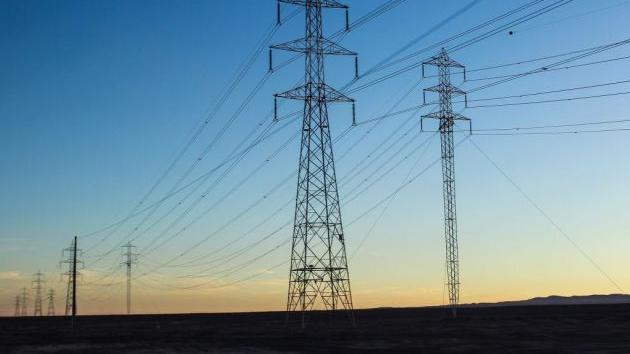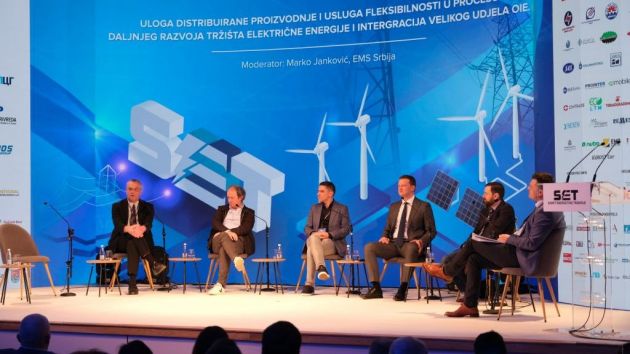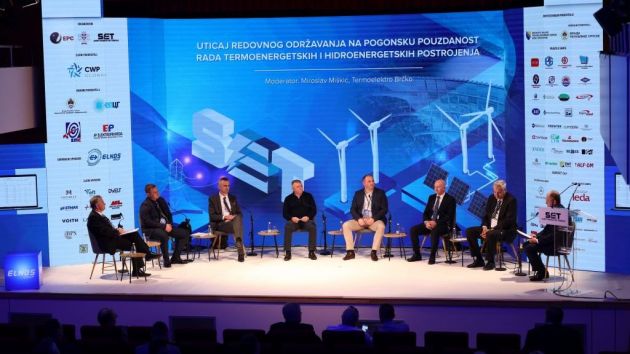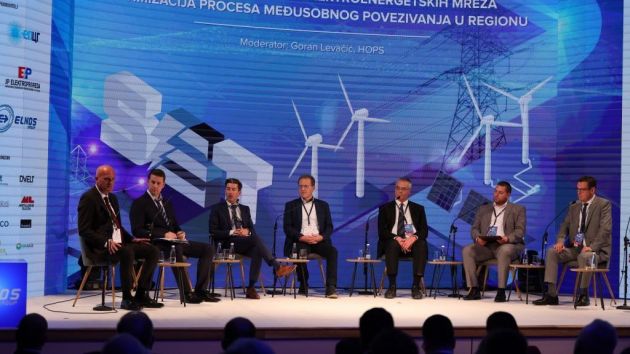SET 2023: How to Cope with High Energy Prices in the Region?
Source: eKapija
 Wednesday, 29.03.2023.
Wednesday, 29.03.2023.
 11:57
11:57
 Wednesday, 29.03.2023.
Wednesday, 29.03.2023.
 11:57
11:57
(Photo: SET/3D Media)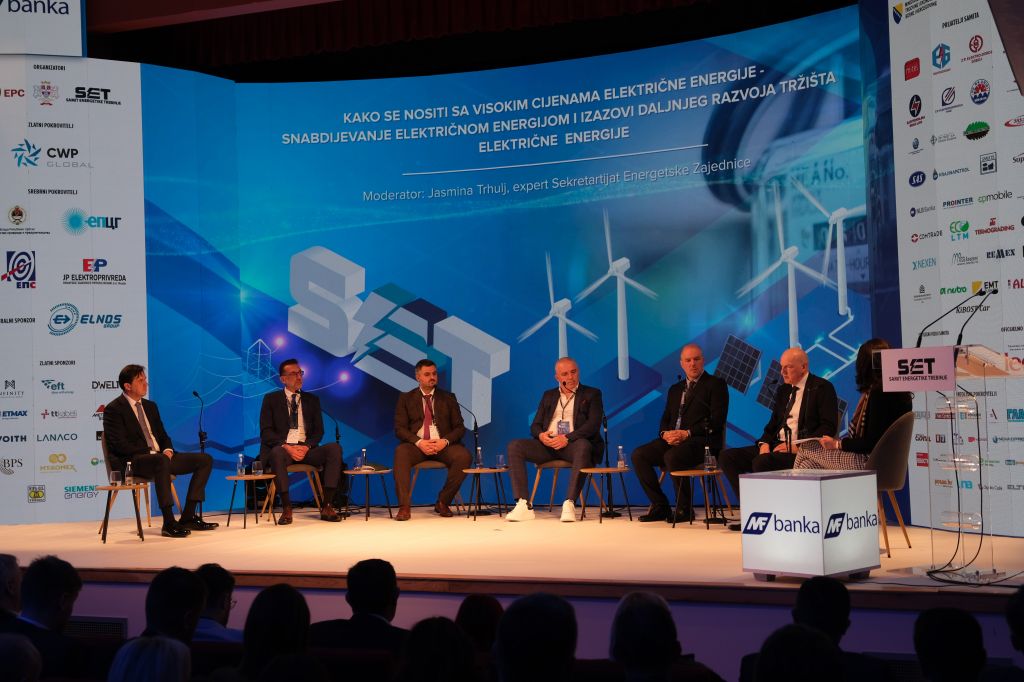

As we know and have noticed, the prices are two, three, even four times lower for households, which is not the case in the industry. The topic of this panel is also the further development of the market. Also, due to the breadth of this topic, there is the question of what comes to our mind first. I believe that, in the region, the first thing that everyone thinks about is the opening of day-ahead markets.
The announcement is that, in the next month or two, we expect the opening of three new markets, one of them in Montenegro on April 26, then in Albania in April or May and in North Macedonia on May 10. We will see what happens and whether SEEPEX gets competition in these markets in the region. Also, the opening of an intraday market within SEEPEX is expected.
On the other hand, if we’re talking about the future development, what’s extremely important for the parties to the Energy Community treaty is that a new package of measures for electrical energy has been adopted, which, for the first time, fully secures an equal position of our market compared to the European market. The new package of measures enables our countries to fully integrate into the European market. It is a great opportunity, but also a big job which lies ahead of us, to transpose and implement ten rules, directives and regulations in total, and the deadline is by the end of this year. Several days ago, the road map for the implementation of the package was published on the website of the Energy Community.
What do the experts and participants in the panel “How to Cope with High Energy Prices in the Region – Energy Supply and Challenges of Further Development of Electrical Energy Market” have to say about these topics?
Almir Imamovic, the head of the Sector for Markets and Tariffs at the State Electricity Regulatory Commission of Bosnia and Herzegovina (DERK BiH), pointed out that, when we talked about the high prices of electrical energy, the expert part that deals with it talked about the wholesale prices.
– We are witnessing what has been happening in the past two years. The crisis started in August 2021, when the prices at the Hungarian market exceeded EUR 100/MWh for the first time. The question of all questions is what happens to that price in the future. Where will it go in the coming period and is it going to drop below that magic level of EUR 100/MWh? If that happens, there is a good chance for that price to go back to those levels that existed before this energy crisis. That is the period before mid-2021. As for the prices in the balance market, BiH has a fully functional balance market, one of the best ones in the region, and that reflection from the wholesale market is present, especially when it comes to de-balance prices. Those are the prices of the energy where the responsible parties deviate from the daily schedule, those prices are close or very close to wholesale prices. We also come to the third segment, the retail market, where that reflection, I would say, is at its lowest. I already talked at the Neum Summit about how, when it comes to going through this crisis, BiH fared the best of all the countries of the Western Balkans and the region, because it had turned out that the balance position was the deciding factor in that situation, the balance position of the country, and within BiH, even the balance position of certain power companies. It is well-known that our power companies achieved very good financial results in both 2021 and 2022, with the exception of EP HZHB in 2022 due to a worse situation with the hydro sector, and that’s what its portfolio is like. The good situation in the hydro sector in the first three months of this year has practically annulled all the losses or the majority of those losses from 2022. In retail, at least in BiH, this jump in wholesale prices has not had an impact or it has had a very low impact, and none on the households. For the industry, it goes up to 20% – Imamovic added.
Dejan Draskovic, the COO of BELEN, the Montenegrin electrical energy market in founding, believes that the high price is the one that’s visible in the wholesale market.
– Undoubtedly, it has turned out that it is a speculative market that is influenced by plenty of factors. We haven’t always had an adequate jump, or a drop of the price depending on the factors that were happening in the region, which only confirms that the price itself will always form depending on the supply and demand. I have to praise our Elektroprivreda, whose first priority was to protect the consumer, and last autumn, the burden and the pressure of the enormous prices that were in effect then were handled heroically. However, the hydro sector only became favorable at the end of the year. The question is what would have happened if it hadn’t been for that, not just locally, but in the whole region, because we’ve witnessed the prices exceeding EUR 500/MWh at one point. I would like to comment on the balance market. The prices there should always be high, the balance market should always “penalize” those who would potentially misuse the system. However, we should always be aware that, sometimes, the system is not being misused and that, instead, the position is inescapable. A mechanism should be found that would protect everybody.
Ervin Leko, the head of the Market Sector in Elektroprivreda HZHB, believes that, when it comes to high prices, nobody can tell what a high price is, and what a low one is. We should fight, he says, especially those who work in the public sector, to have the price be as favorable as possible for the purchasers.
– Not as low as possible, but as favorable as possible, so that the citizens could have a good life, as well as the industry. On the other hand, the industry should be aware of that and realistic about the fact that the output product in the industry has become much more expensive and that there is room there for increasing the price of energy. As for our Elektroprivreda, mister Imamovic said that, last year, we operated with a certain loss. You all know that we produce 100% of our electricity from hydro power plants and one wind farm. Due to the energy deficit in the third quarter and the record prices, we managed to have that minus be at its minimum. In this year, as of today, we have had a profit that has compensated for that minus, so it has not jeopardized our operations in any sense. On the other hand, last summer, we didn’t receive help from some institutions in the Federation of Bosnia and Herzegovina, even though we had good propositions, because one power company in FBiH was selling at the same time the other one was buying. There was no good will to solve that, but that’s alright… We continue advocating the establishment of an intraday market and a day-ahead market in BiH, because we were the first ones to initiate that process, and we can see that it is close to the beginning of its realization – Leko emphasized.
Vladan Rankov, the commercial director of CWP Global Serbia, says that, when they observe the electrical energy market, it is mostly through “contracts on delivery ahead.”
– For us, those are the reference graphs when we estimate the value of long-term agreements on the purchase of electrical energy. I wouldn’t say that the prices are high. I would rather say that this is the new normal, due to the choice of heading into energy transition and the appearance of considerable capacities from renewable sources. “The merit order” is changing in all countries, and as a consequence, there is a jump in prices. When you look at the graphs in the long-term, that price hovers around EUR 100/MWh. I would say that it is a long-term predictable price and the new normal, due to the appearance of renewable energy sources. It’s interesting that it is estimated that, by the end of 2023, there will be 1 TB of cumulative installed capacities of wind farms in the world, which has been achieved in 33 years. The estimate is that the capacity will double in the next ten years. So, that’s the ongoing trend and the price jump is a consequence of that – Rankov believes.
No price is too high, and no price is too low, points out David Zarkovic, the director of the Sector for the Free Market of Elektroprivreda Srbije.
– It only depends on the context from which things are viewed. Between those two extremes are the market, the regulatory framework, the participants in the market – private ones and power companies. They are trying to make a compromise between those two extremes in some way, from their positions.
(Photo: SET/3D Media)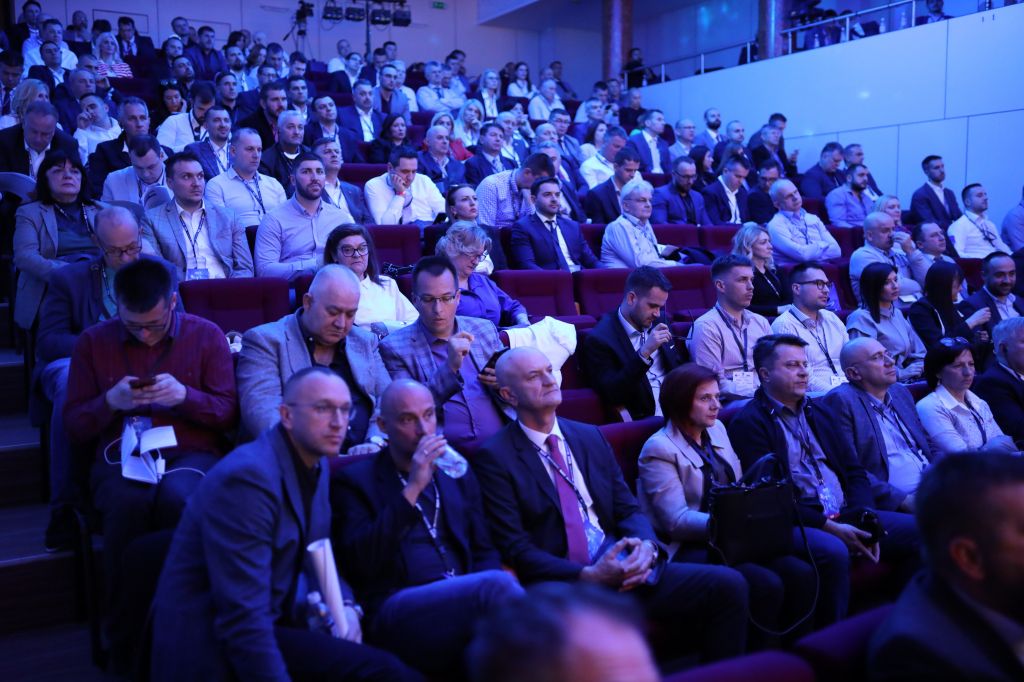

– Last year, the prices skyrocketed. Practically 300, 500, and even up to EUR 1,000/MWh. That was a great blow to the power companies in the region which supply the consumers at subsidized prices. In the HUPX market, which is the reference market for the Western Balkans market, it was EUR 271.66. That is truly enormous. Now that price is EUR 140/MWh, during the first three months. The prices were truly high, especially for us who subsidize consumers.
Imamovic emphasizes that light should be cast on the causes of this current crisis, because, as he says, if observed globally, Europe has been the most affected by the energy crisis.
– BiH escaped the crisis as a winner, because it had a positive balance position, it had a surplus of energy, it exported. Exporting at those prices has led to great income, so the power companies in BiH, overall, went through the crisis quite successfully, unlike Serbia, North Macedonia and Albania, where they have had to subsidize those companies, in order to purchase energy at expensive prices. What was the alternative? The alternative was to go into a reduction regime, to switch off end-users. In that sense, BiH is the winner, as shown by all the data – Imamovic said.
Zivkovic points out that, in this crisis, it has been challenging to meet the primary goal of the security of supply of end-users at acceptable prices.
– To continue the topic, no price is too low for the end-users. The problems in production, the record drought last year, resulted in a financial effect. In the end, everything is measured by money, this included. The only escape from that situation is what we are currently doing – in order to balance between the extremely high and the extremely low prices, which both the producers and the consumers expect, our position needs to be highly efficient. That is the only way to satiate those two appetites. We have drastically raised the production and reliability of the thermal capacities. The examples are January and February 2022 and January and February 2023: the average production of EPS is higher this year by 700 MW per hour, the average value for two months. Of that, 560 MW comes from thermal capacities, and 240 from hydro potentials. That is the only way that we can carry this out. The other is to be innovative. There’s no shame in buying coal. Everybody says, you’re importing coal from the whole world. True, but if that coal is cost-effective at the current prices and if it brings a profit, of course we’re going to do it. Our landfills are 700,000 tons fuller in the first two months of this year, compared to the first two months of last year. The financial effects are slowly becoming apparent and, this year, we are all trying to compensate for last year and I hope we will succeed.
Transfer Network Problem
An analysis of EP HZHB has shown that they have fared better for not being directly in markets, emphasizes Leko.
– I’ll explain why, especially when you’re in BiH. For today, the output capacities from BiH at some points is 20, and in some EUR 30/MWh and it is not easy to “target” that capacity price, unless you’ve made a good long-term move, like Elektroprivreda RS, which has leased an annual capacity at much lower prices. The question is why the capacities are big. At the opening of the panel, we heard about 1,000, 5,000, 10,000… even 25,000 new MW in renewable sources. I claim that this network will not be able to take that in the next 50 years. I will take the liberty of proposing for next year for the main topic of SET to be the transfer network problems, that is, the reception of energy from renewable sources. We all have a thousand, two, or five consents in principle, so the investor gets consent in principle with that paper, invests funds and gets all the permits, practically a building permit and a concession agreement, but can’t connect to the network. That’s a problem. We also expect help from the Energy Community in initiating more discussion about that problem, because we can’t move forward without it. All we hear are populist statements like “we will build solar capacities.” We certainly need them in order to decarbonize, but there’s only sunlight for eight hours. That is why the capacities during those eight hours are at EUR 50. Another question pertains to problems in BiH, it’s not just the energy from BiH that raises the price of capacities. In the past 15 days, we’ve had a quite favorable hydro situation, we’ve been recording surpluses, we’re selling them outside, which leads to clogging and increases the price of capacities. Do you know how much energy goes from the south through BiH toward the west? I am inviting the gentlemen from the competent regulatory bodies, when there’s clogging, not to take the same view on those who transport and those who produce and supply people here. We need some priorities after all. Several days ago, it happened that the Croatian operator of the transfer system blocked the border and brought the trade down to zero. Most of those present here are maybe hearing this for the first time. We have a surplus of 500 MW. What do we do with it? Is that amount of 500 MW to spill over into BiH? Those are the problems that need to be addressed, and everybody is avoiding that topic – Leko underlines.
The moderator of the panel, Jasmina Trhulj of the Energy Community, pointed out, in response to this topic, that the Energy Community was preparing a study at that moment which aimed for the implementation of a new energy package, adopted in order to secure a 70% availability at cross-border transfer capacities.
Market in Montenegro to Open on April 26
Dejan Draskovic, the COO of BELEN, says that there will be a market which will start at 10.15 am, which means that the participants will have the option of trying to close their positions earlier.
– We believe that, on one hand, it will act as a motivating factor. I always expect the traders to contact us. They are very experienced in this job, they know how to position themselves and how to approach with all their positions, regardless of whether they are long- or short-term. I hope that the passive participants will use the opportunity and be more active in the market, at least for the flexible hours which, in a long-term profile, they wouldn’t be able to get, or they would pay penalties. Recently, a small hydro power plant was registered in Serbia as a participant in SEEPEX, which is a signal for others that small producers can become participants which will sell their production under the market conditions and that they simply don’t have to depend on incentives. In a way, that promotes green energy, as well as the market itself. In order to further stimulate liquidity, we have entered an arrangement with Elektroprivreda Crne Gore, which has agreed to also be the “marketmaker”. At every hour, they will be both the purchaser and the seller at the same time. We also have a certain number of small hydro power plants which have exited the incentive system in order to place their energy locally, but also through mediators in the region. Back in 2013, energy from Montenegro started appearing in the markets of Slovenia, Hungary, Serbia and Croatia. It’s not a new thing, and what is new is that a market is now opening here as well. We expect a cautious start, but the interest of the producers is even better than we predicted. We already have 11 registered participants, and we haven’t even started the final tests. That is a remarkable sign. That is the first step, that foundation that we need in order to do what’s necessary, which is to merge the markets.
Long-Term Agreements on Purchase of Green Energy
Vladan Rankov, the commercial director of CWP Global Serbia, believes that the way to overcome the crisis was to consider variable price structures, to shorten the period of agreements on long-term purchase and to negotiate different crediting conditions with the banks.
– Those were the main challenges for us. When it comes to the consumers, I believe that long-term agreements on the purchase of electrical energy from renewable sources can be a good mechanism for how to protect end-users from high prices. My opinion is that the trend will be how to bring green energy to end-users. That is the key to unlocking additional capacities in renewable sources in the coming period. It’s not all about how to obtain the building permit, but also how to finance a large project which is not included in the company’s balance and how to secure a long-term agreement on the purchase of electrical energy, which is a guarantee for the possibility of paying out the loan. My opinion is that the key will be how to bring green energy to end-users, because they are the ones who traditionally can enter hedging arrangements in the long term – Rankov pointed out.
Let us remind that the Trebinje Energy Summit 2023 was held between March 22 and 24, organized by Elektroprivreda RS, the City of Trebinje and the company SET.
The eKapija portal is a media sponsor of the Summit.
More about the panels and events can be found in a special section at the link available HERE.
Slobodana Subara
Tags:
SET Trebinje
Elektroprivreda RS
Elektroprivreda Srbije
CWP Global Serbia
BELEN Montenegro
Energy Community
State Electricity Regulatory Commission of Bosnia and Herzegovina
DERK BiH
Amir Imamović
Dejan Drašković
Ervin Leko
Vladan Rankov
Zoran Vuković
Jasmina Trhulj
SET 2023
Trebinje Energy Summit
energy crisis
prices of electrical energy
electricity prices
production of electricity
distribution of electricity
renewable energy sources
RES
electrical energy market
electricity market
agreements on purchase of green energy
Comments
Your comment
Naš izbor
Most Important News
Full information is available only to commercial users-subscribers and it is necessary to log in.
Follow the news, tenders, grants, legal regulations and reports on our portal.
Registracija na eKapiji vam omogućava pristup potpunim informacijama i dnevnom biltenu
Naš dnevni ekonomski bilten će stizati na vašu mejl adresu krajem svakog radnog dana. Bilteni su personalizovani prema interesovanjima svakog korisnika zasebno,
uz konsultacije sa našim ekspertima.


 Izdanje Srbija
Izdanje Srbija Serbische Ausgabe
Serbische Ausgabe Izdanje BiH
Izdanje BiH Izdanje Crna Gora
Izdanje Crna Gora


 News
News







